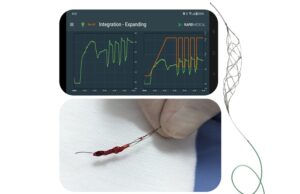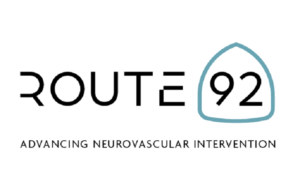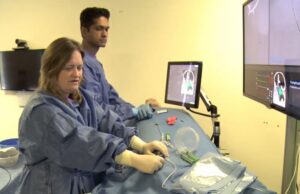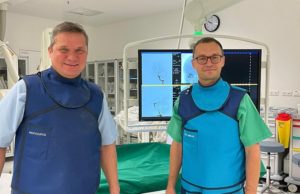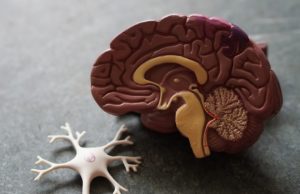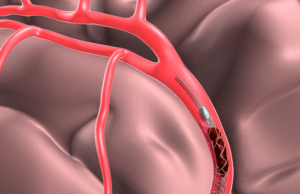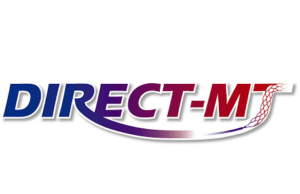Tag: endovascular therapy
AHA advisory: Recent clinical data “reframe” role of EVT in large-core...
A new scientific advisory from the American Heart Association (AHA)—published recently in the journal Stroke—has reviewed clinical data from six randomised controlled trials evaluating...
Rapid Medical completes successful stroke procedures with “world’s first” robotic thrombectomy...
Rapid Medical has announced what it claims is the first successful robotic thrombectomy, in Medellín, Colombia. Two patients were treated with the robotic Tigertriever—an...
No-reflow in clinical studies: Causes, rates and implications for patient outcomes
In a guest article for NeuroNews, Adnan Mujanovic (Bern, Switzerland) discusses a relatively unknown but potentially significant factor in stroke patients experiencing poor clinical...
Route 92 announces 100th patent for its neurovascular intervention portfolio
Route 92 Medical has announced the company’s 100th global issued patent for its innovative neurovascular intervention product portfolio, as per a press release. The...
Ischaemic stroke—we are all vulnerable
Conrad Yiu, a pioneer and visionary in interventional ischaemic stroke therapy, passed away in the final weeks of 2023, succumbing to the very disease for...
Is thrombectomy set to become the standard of care for medium...
With multiple large clinical trials currently underway to assess thrombectomy treatments in patients with medium vessel occlusion (MeVO) stroke, Johanna Ospel (Calgary, Canada) takes...
IRIS data shed new light on how treatment delays may impact...
A collaboration analysing several major clinical trials has found that endovascular therapy (EVT) plus intravenous thrombolysis (IVT) is likely to be superior to EVT...
Performance feedback significantly reduces door-to-groin time in endovascular therapy
Supplying healthcare providers with performance feedback can significantly reduce the time between an ischaemic stroke patient arriving at a hospital and them subsequently receiving...
New WIST guidelines seek to improve access and standardise training in...
A new set of guidelines intended to standardise and expand stroke thrombectomy training have been published simultaneously in Europe, in the journal Advances in...
Meta-analysis including recent basilar trials signals benefit of EVT in posterior...
A meta-analysis of recent basilar artery occlusion trials—including ATTENTION and BAOCHE—has further indicated the potential benefits held by endovascular therapy (EVT) in treating posterior-circulation...
BAOCHE trial results supporting thrombectomy for basilar artery stroke published in...
Results from the BAOCHE randomised controlled trial (RCT), which found that the addition of thrombectomy to standard medical care within 6–24 hours in basilar...
SNIS 2022: Research shows AI-based stroke diagnostics can expand access to...
A new study presented at the Society of NeuroInterventional Surgery’s (SNIS) 19th annual meeting (25–29 July, Toronto, Canada) shows that artificial intelligence (AI) technology...
DISTAL: A landmark trial looking to elucidate endovascular treatment outcomes in...
In December 2021, University Hospital Basel (Basel, Switzerland) enrolled the first patient worldwide in the DISTAL study—a multicentre randomised controlled trial (RCT) evaluating the...
ATTENTION results indicate “we have finally conquered the basilar artery” with...
This year’s European Stroke Organisation Conference (ESOC 2022; 4–6 May, Lyon, France) saw results from ATTENTION—a multicentre randomised controlled trial (RCT) evaluating the benefit...
Study findings encourage direct EVT approaches over bridging thrombolysis in select...
A retrospective study involving more than 200 patients has indicated that ‘bridging thrombolysis’ may not be associated with improved functional outcomes in stroke patients...
ISC 2022: New study finds better outcomes in patients treated at...
When comparing outcomes for acute ischaemic stroke patients treated at various levels of stroke centres, patients who received care at comprehensive stroke centres (CSC) or thrombectomy-capable...
New player in stent retriever space demonstrates non-inferiority to Solitaire device
A relatively new introduction to the field of endovascular therapy (EVT) for acute ischaemic stroke, the Skyflow stent retriever (Skyflow), has demonstrated non-inferiority with...
Mechanical thrombectomy shown to restore more function than medication alone following...
A new study from Japan has become the first randomised controlled trial (RCT) to demonstrate the effectiveness of endovascular mechanical thrombectomy procedures in patients...
Route 92 Medical announces first patient enrolment in SUMMIT MAX pivotal...
Route 92 Medical has announced the first patient enrolment in its SUMMIT MAX clinical trial—a randomised, controlled, multicentre study to evaluate the performance of...
Enabling new possibilities in stroke treatment with Stream technology
This advertorial is sponsored by Perflow.
The StreamTM family of products (Perflow) is a range of dynamic neurothrombectomy net devices designed to give physicians greater...
Time savings, cost reductions and improved patient outcomes all key benefits...
Artificial intelligence (AI) and the role it can play in improving acute ischaemic stroke care protocols took centre stage at the Barts Research and...
AURORA: Evidence in favour of thrombectomy beyond six hours strengthened by...
Evidence favouring endovascular therapy (EVT) in anterior circulation stroke patients presenting with reversible cerebral ischaemia in the later time window (beyond six hours) from...
Hispanic stroke patients experience poorer post-thrombectomy outcomes than white counterparts
A study conducted by neurology researchers at University of Texas Southwestern (UTSW) Medical Center has found lower-quality functional outcomes for Hispanic ischaemic stroke patients...
LINNC 2021: ESCAPE-NEXT trial may bring “dream” of combining neuroprotection with...
At this year’s LINNC Paris Course (14–16 September, Paris, France and virtual), audiences heard that the ESCAPE-NEXT trial (sponsored by NoNO Inc.), which has already started enrolling...
“Welcome and exciting”: Evidence mounts in favour of flow diversion technologies
Multiple pieces of clinical research supporting the use of flow diverter devices to treat intracranial aneurysms have come to light so far in 2021....
Flying intervention teams lead to higher EVT rates and reduced time...
Flying teams of interventionists directly to a primary stroke centre to perform endovascular therapy (EVT)—as opposed to waiting for the patient to be transferred...
Benefits of EVT for basilar artery occlusion “cannot be excluded” following...
A randomised controlled trial (RCT) involving 300 patients found that functional outcomes among basilar artery occlusion stroke patients “did not differ significantly” with endovascular...
Time is brain: Travelling stroke team enables faster treatment and better...
In a pilot programme in New York City, USA, a mobile interventional stroke team (MIST) travelled directly to patients to perform emergency stroke surgery...
Research shows new surgical technology may help reduce brain aneurysm regrowth
A new tool for treating brain aneurysms may protect artery blood flow during surgery and reduce the risk of aneurysm regrowth, according to a...
Repeated clot retrieval attempts linked to poorer functional outcome in acute...
Repeated clot retrieval attempts are associated with an increased rate of emboli to new territory (ENT) and greater infarct growth—resulting in poorer functional outcomes...
Data from 1,000 aneurysms indicate Pipeline Embolization Device is safe and...
The endovascular treatment of intracranial aneurysms using the Pipeline Embolization Device (PED; Medtronic) has been deemed safe and effective following a study involving data...
Noninferiority of thrombectomy alone further demonstrated in acute ischaemic stroke treatment
The noninferiority of mechanical thrombectomy alone—compared to mechanical thrombectomy plus intravenous tissue plasminogen activator (IV-tPA)—for the treatment of acute ischaemic stroke has been demonstrated...
Transradial access may be safer than transfemoral access for flow diversion...
Transradial, as opposed to transfemoral access, may be a safer approach for flow diversion procedures to treat cerebral aneurysms at a wide range of locations. This conclusion was reached...
Direct mechanical thrombectomy alone deemed non-inferior to its combination with alteplase
Investigators of the DIRECT-MT trial, who evaluated Chinese patients with acute ischaemic stroke from large-vessel occlusion, concluded that endovascular thrombectomy alone was non-inferior in...
Selective endovascular cooling with TwinFlo catheter shows promise for neuroprotection in...
Ron Solar (ThermopeutiX, San Diego, USA) and colleagues report in EuroIntervention that the TwinFlo catheter (ThermopeutiX), in pigs, was associated with rapid, selective, deep...
Live from ISC: Study finds endovascular therapy access within 15 minutes...
Current direct endovascular therapy access for acute ischaemic stroke within 15 minutes is limited to one-fifth of the US population, concludes a recent...
Superior clinical outcomes for endovascular therapy candidates triaged directly to a...
For patients with emergent large vessel occlusion (LVO) eligible for endovascular therapy, prehospital triage to a more distant comprehensive stroke centre (CSC) compared with...
GOLIATH trial wins ESMINT award for best European publication in JNIS
At the recent European Society of Minimally Invasive Neurological Therapy (ESMINT; 4–6 September, Nice, France), the award for the best European publication in the...
While the use of endovascular therapy doubled with the emergence of...
According to Laura Stein and others from the Icahn School of Medicine at Mount Sinai, New York, USA, patients admitted with acute ischaemic stroke...
Reperfusion promotes favourable outcomes in ischaemic stroke patients with ASPECTS 0–5...
In a subgroup of acute ischaemic stroke patients presenting with Alberta stroke program early CT score (ASPECTS) 0–5, who were treated with mechanical thrombectomy,...
The efficacy of endovascular stroke therapy outside of specialised centres needs...
Real-world data investigating patient outcome after endovascular stroke therapy in high versus low volume centres finds a 30% increase in the likelihood of a...
Canadian-led international study shows huge costs of delayed access to stroke...
It has been known for years that it is important to get stroke patient’s treatment as soon as possible to increase their chances of...
Shorter treatment times for endovascular therapy with “trip-and-treat” stroke model
A team at Mount Sinai Hospital in New York, USA, has shown that their trip-and-treat model is associated with shorter treatment times for endovascular...


